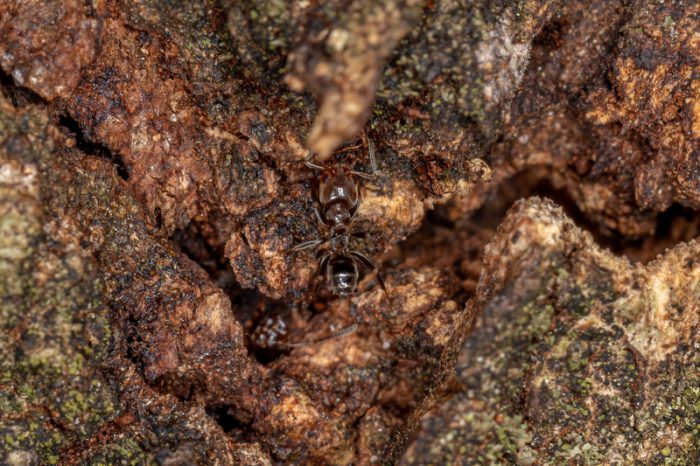Ants are fascinating insects. Some farm fungus. Others can form living life rafts to cross creeks and streams. In some way or another, nearly all ants are able to divide different types of work across their societies to accomplish great things that benefit the entire group. And sometimes, those benefits extend beyond the ants themselves.
Take the Cecropia, a common tree found across the tropics of the Americas. These trees are a favourite home for the Azteca alfari ant, whose colonies live within its hollow stems. Biologists and botanists have already observed how the ants will attack herbivores that attempt to feed on the trees leaves. But a new, accidental study has shown that they will go a step further, and actually repair damage to the tree's exterior.
And the way this was discover? A student and a slingshot!
Whoops!

The student volunteers carry out their experiment. (Donna Conlon/STRI)
High school student Alex Wcislo was in the Panamanian rainforest as a part of a volunteering program with the Smithsonian Tropical Research Institute (STRI). One day, he took a shot with his slingshot and shot a marble-sized hole clean through a Cecropia branch. But the next day, he and his fellow students were amazed to see that the hole had been plugged up.
It was repaired by the ants that live in the tree.
Soon, an experiment was proposed. The team drilled several small holes in other trees to see if they would be patched up, too. Out of 22 holes, an impressive 14 were sealed up. The ants made the repairs by combining chewed plant fibres and what the report called an 'unidentified binding liquid (probably plant sap)' into a substance that dried and sealed the 'wound' in the tree.
All in all, each attempted repair was started within 2.5 hours of the damage happening and finished in 24 hours. Incredible!
For the tree or for themselves?

The distinct leaves of the Cecropia tree. (Wikimedia Commons)
When you read this study, it is almost as though the ant colony living in each tree was a rapid response team working on behalf of the plant! But is it that simple?
Scientists caution about reading too much into the ants' motivations. True, they have a symbiotic—or mutually beneficial—relationship with the Cecropia. The tree has the ants chase away larger creatures feeding on it, while the ants gain shelter and their own source of food (an oily secretion from the leaves). But by repairing the holes in the tree, are the ants really trying to heal the tree? If so, why were 8 of the 22 holes left unrepaired?
Researchers have guessed that the ants may only repair the holes that directly affect their own colony—like how a person would repair the hole in their own roof, but maybe not the one of an abandoned house next door. More research is needed to really understand this behaviour and why it happens.
But even if the ants are only acting out of their own best interests, it is probably true that the tree benefits, too. And since there aren't a lot of people walking around the rainforest with slingshots and drills, it is likely also true that ants are used to making these sorts of repairs due to marks left on the tree by larger creatures, such as sloths and anteaters, or birds.
Whatever the truth is, there's no question that this is another worthy chapter in the amazing story of the ant—an insect that is always finding ways to take teamwork to new levels!
 This ant loves its home! (ID 229868506 © Viniciussouza06 | Dreamstime.com)
This ant loves its home! (ID 229868506 © Viniciussouza06 | Dreamstime.com)










Well I don’t know but ants ate three big that it’s a good thing you’re doing a repair I think it’s interesting
Interesting I never knew that ants ate tree